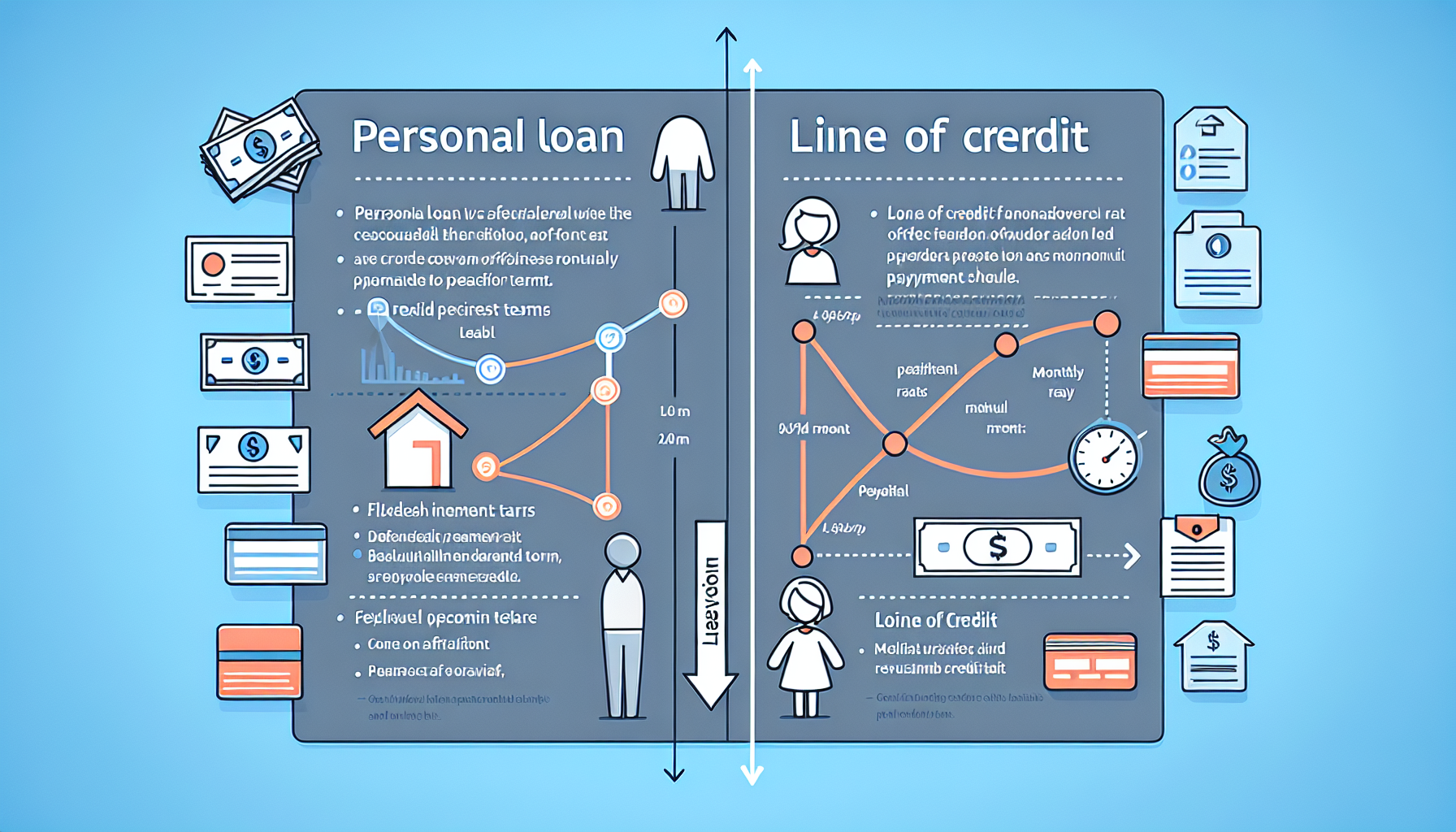When it comes to borrowing money, personal loans and lines of credit are two common options that individuals often consider. While both can provide access to funds when needed, there are key differences between the two that borrowers should understand in order to make an informed decision. In this article, we will explore the distinctions between personal loans and lines of credit, as well as compare the benefits and drawbacks of each option.
Key Differences Between Personal Loans and Lines of Credit
Personal loans are typically a lump sum of money borrowed from a financial institution, which is then repaid in fixed installments over a specified period of time. The interest rate on a personal loan is usually fixed, meaning that the monthly payments will remain the same throughout the loan term. On the other hand, a line of credit is a revolving credit account that allows borrowers to access funds up to a certain limit, similar to a credit card. Borrowers can use the funds as needed and only pay interest on the amount borrowed.
Another key difference between personal loans and lines of credit is how the funds are accessed. With a personal loan, borrowers receive the entire loan amount upfront and begin making payments immediately. In contrast, a line of credit provides borrowers with the flexibility to access funds as needed, up to the approved credit limit. This can be beneficial for individuals who may not need the full amount of a loan all at once, or who anticipate needing additional funds in the future.
Comparing the Benefits and Drawbacks of Each Option
One of the main benefits of a personal loan is the predictability of fixed monthly payments, which can make budgeting easier for borrowers. Additionally, personal loans are ideal for one-time expenses, such as home renovations or medical bills, as the lump sum can be used to cover the cost upfront. On the other hand, lines of credit offer flexibility and convenience, allowing borrowers to access funds as needed and only pay interest on the amount borrowed. This can be advantageous for individuals who have fluctuating expenses or anticipate needing funds over an extended period of time.
However, there are drawbacks to consider with both personal loans and lines of credit. Personal loans may come with higher interest rates than lines of credit, particularly for individuals with less-than-perfect credit scores. Additionally, borrowers may be charged origination fees or prepayment penalties with a personal loan. On the other hand, lines of credit can be tempting for some individuals to continuously borrow and accumulate debt, leading to potential financial strain. It is important for borrowers to carefully consider their financial situation and needs before choosing between a personal loan and a line of credit.
In conclusion, understanding the key differences between personal loans and lines of credit can help individuals make an informed decision when considering borrowing money. Personal loans offer predictability and are ideal for one-time expenses, while lines of credit provide flexibility and convenience for borrowers. By comparing the benefits and drawbacks of each option, borrowers can choose the option that best suits their financial needs and goals. Ultimately, it is important to carefully consider factors such as interest rates, repayment terms, and usage needs before deciding between a personal loan and a line of credit.


Related Posts :